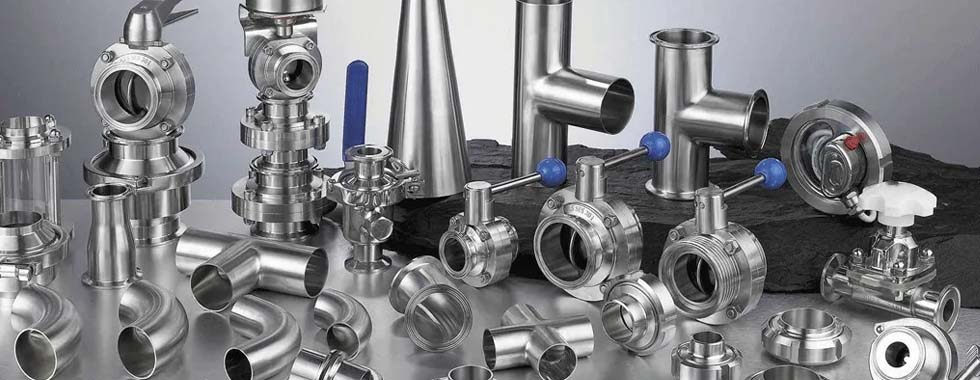The Essential Guide to Sanitary Fittings: What They Are and Why They Matter

Sanitary fittings are a crucial component in industries where hygiene is of the utmost importance. From food and beverage processing to pharmaceuticals and biotechnology, these specialized fittings ensure that products are manufactured, processed, and handled in environments that meet strict sanitary standards. But what exactly are sanitary fittings, and why are they so essential?
What Are Sanitary Fittings?
Sanitary fittings are types of connectors used in piping systems that transport liquids or gases, designed to meet stringent hygiene standards. These fittings are typically made from high-grade stainless steel, which is resistant to corrosion, easy to clean, and doesn’t react with the substances being transported. The smooth, crevice-free design of sanitary fittings prevents the build-up of bacteria and other contaminants, ensuring that the product remains pure and uncontaminated throughout the process.
Common Types of Sanitary Fittings:
- Tri-Clamp Fittings: Known for their ease of use and secure seal, tri-clamp fittings are one of the most popular types of sanitary fittings in industries like brewing and dairy.
- Tube Fittings: These include various connectors like elbows, tees, reducers, and crosses, which are designed to facilitate the direction and flow of liquids through a piping system.
- Valves: Sanitary valves control the flow of liquids or gases and come in different types like ball valves, butterfly valves, and diaphragm valves, each serving specific purposes in a sanitary system.
Why Do Sanitary Fittings Matter?
1. Maintaining Product Integrity
In industries like food processing and pharmaceuticals, maintaining product purity is non-negotiable. Sanitary fittings prevent contamination, ensuring that the products meet safety standards and are safe for consumption or use.
2. Compliance with Regulations
Industries that utilize sanitary fittings are often heavily regulated. Standards such as 3-A, FDA, and EHEDG (European Hygienic Engineering & Design Group) set strict guidelines for equipment used in these sectors. Sanitary fittings are designed to comply with these regulations, helping companies avoid costly penalties and recalls.
3. Ease of Cleaning and Maintenance
The design of sanitary fittings makes them easy to clean and sterilize, which is crucial in environments where hygiene is a top priority. Their smooth surfaces and lack of crevices reduce the risk of bacteria buildup, making routine cleaning more effective.
4. Durability and Longevity
Made from materials like stainless steel, sanitary fittings are built to withstand harsh conditions, including high temperatures, pressure, and exposure to chemicals. This durability translates into long-lasting performance, reducing the need for frequent replacements and downtime.
5. Flexibility in Design
Sanitary fittings come in various shapes, sizes, and configurations, allowing for flexible design in piping systems. Whether you need to accommodate a complex layout or adjust the flow rate, there’s a sanitary fitting to meet your needs.
Applications of Sanitary Fittings
- Food and Beverage Industry: Used extensively in dairy, brewing, and beverage production to ensure that products are free from contaminants.
- Pharmaceutical Industry: Essential in drug manufacturing and processing, where even the smallest contamination can have serious consequences.
- Biotechnology: Used in the production of vaccines, biologics, and other sensitive products, where maintaining sterile conditions is critical.
- Cosmetics and Personal Care: Ensures that lotions, creams, and other products are manufactured in clean, safe environments.
